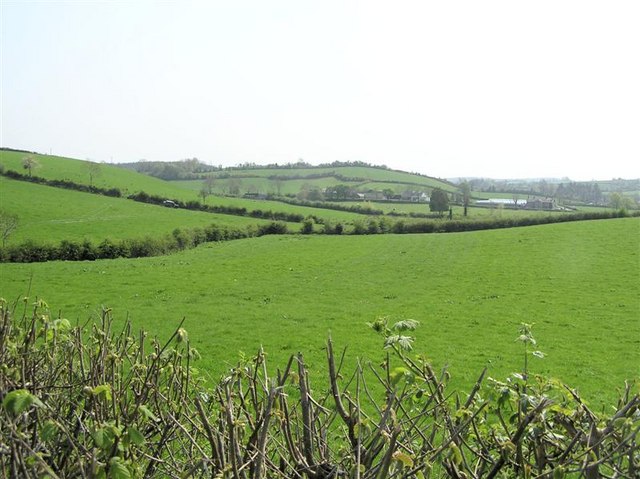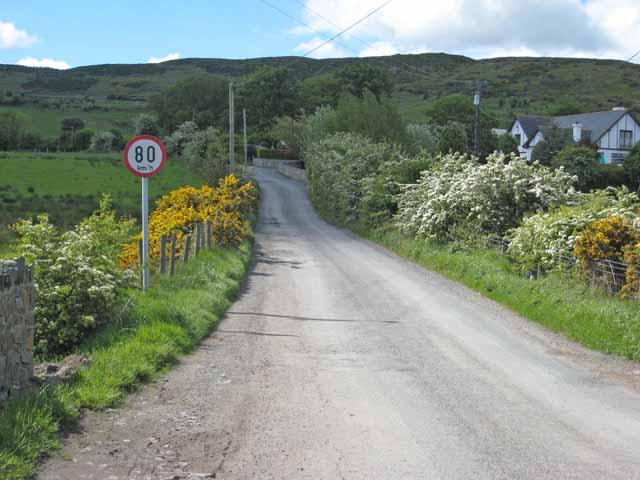|
R182 Road (Ireland)
The R182 road is a regional road in Ireland linking Castleblayney and the Republic of Ireland–United Kingdom border in County Monaghan. The road continues in Northern Ireland Northern Ireland ( ga, Tuaisceart Éireann ; sco, label= Ulster-Scots, Norlin Airlann) is a part of the United Kingdom, situated in the north-east of the island of Ireland, that is variously described as a country, province or region. Nort ... as the A25. The road is long. See also * Roads in Ireland * National primary road * National secondary road References {{Roads in Ireland Regional roads in the Republic of Ireland Roads in County Monaghan ... [...More Info...] [...Related Items...] OR: [Wikipedia] [Google] [Baidu] |
County Monaghan
County Monaghan ( ; ga, Contae Mhuineacháin) is a county in Ireland. It is in the province of Ulster and is part of Border strategic planning area of the Northern and Western Region. It is named after the town of Monaghan. Monaghan County Council is the local authority for the county. The population of the county was 61,386 according to the 2016 census. The county has existed since 1585 when the Mac Mathghamhna rulers of Airgíalla agreed to join the Kingdom of Ireland. Following the 20th-century Irish War of Independence and the signing of the Anglo-Irish Treaty, Monaghan was one of three Ulster counties to join the Irish Free State rather than Northern Ireland. Geography and subdivisions County Monaghan is the fifth smallest of the Republic's 26 counties by area, and the fourth smallest by population. It is the smallest of Ulster's nine counties in terms of population. Baronies * Cremorne ( ga, Críoch Mhúrn) * Dartree ( ga, Dartraighe) * Farney ( ga, Fearnaigh) * ... [...More Info...] [...Related Items...] OR: [Wikipedia] [Google] [Baidu] |
R181 Road (Ireland)
The R181 is a regional road in Ireland, running from the R162 near Shercock to the border with Northern Ireland near Keady, where it meets the B32. Route The R181 begins on the R162 road near Shercock in County Cavan. It soon enters County Monaghan and continues to Castleblayney, where it runs along the main street before reaching a junction with the R182. It then heads to the border, which it crosses, becoming the B32, which continues to Keady. See also * Roads in Ireland *Motorways in Ireland In Ireland, the highest category of road is a motorway (''mótarbhealach'', plural: ''mótarbhealaí''), indicated by the prefix M followed by a one- or two-digit number (the number of the national route of which each motorway forms a part). Th ... * National primary road * Regional road References Roads Act 1993 (Classification of National Roads) Order 2006– Department of Transport Regional roads in the Republic of Ireland {{Ireland-road-stub ... [...More Info...] [...Related Items...] OR: [Wikipedia] [Google] [Baidu] |
Castleblayney
Castleblayney (; ) is a town in County Monaghan, Ireland. The town had a population of 3,607 as of the 2016 census. Castleblayney is near the border with County Armagh in Northern Ireland, and lies on the N2 road from Dublin to Derry and Letterkenny. Geography The town lies above the western shore of Lough Muckno, the largest lake in County Monaghan. The River Fane flows eastwards from the lake to the Irish Sea at Dundalk in County Louth. As the Irish name of the lake ('the place where pigs swim') suggests, the area is associated with the Black Pig's Dyke, also known locally in parts of Counties Cavan and Monaghan as the Worm Ditch, an ancient Iron Age boundary of Ulster. A few miles to the north-east is the highest elevation in County Monaghan, 'Mullyash', at altitude 317 m (1,034 ft). Markets and fair days were held in the town since the 17th century, but these no longer take place. History The area was originally known as ''Baile na Lorgan'' ("town of the lon ... [...More Info...] [...Related Items...] OR: [Wikipedia] [Google] [Baidu] |
Republic Of Ireland–United Kingdom Border
The Republic of Ireland–United Kingdom border, sometimes referred to as the Irish border or British–Irish border, runs for Ordnance Survey of Northern Ireland, 1999MFPP Working Paper No. 2, "The Creation and Consolidation of the Irish Border" (PDF) by KJ Rankin and published in association with Institute for British-Irish Studies, University College Dublin and Institute for Governance, Queen's University, Belfast (also printed as IBIS working paper no. 48) from in the north-west of |
Regional Road (Ireland)
A regional road ( ga, bóthar réigiúnach) in the Republic of Ireland is a class of road not forming a major route (such as a national primary road or national secondary road), but nevertheless forming a link in the Roads in Ireland, national route network. There are over 11,600 kilometres (7,200 miles) of regional roads. Regional roads are numbered with three-digit route numbers, prefixed by "R" (e.g. R105). The equivalent road category in Northern Ireland are Roads in Northern Ireland#"B" roads, B roads. History Until 1977, classified roads in the Republic of Ireland were designated with one of two prefixes: Trunk Roads in Ireland, "T" for Trunk Roads and "L" for Link Roads. ThLocal Government (Roads and Motorways) Act authorised the designation of roads as National roads: in 1977, twenty-five National Primary roads (N1-N25) and thirty-three National Secondary roads (N51-N83) were initially designated unde Many of the remaining classified roads became Regional roads (formally ... [...More Info...] [...Related Items...] OR: [Wikipedia] [Google] [Baidu] |
Republic Of Ireland
Ireland ( ga, Éire ), also known as the Republic of Ireland (), is a country in north-western Europe consisting of 26 of the 32 counties of the island of Ireland. The capital and largest city is Dublin, on the eastern side of the island. Around 2.1 million of the country's population of 5.13 million people resides in the Greater Dublin Area. The sovereign state shares its only land border with Northern Ireland, which is part of the United Kingdom. It is otherwise surrounded by the Atlantic Ocean, with the Celtic Sea to the south, St George's Channel to the south-east, and the Irish Sea to the east. It is a unitary, parliamentary republic. The legislature, the , consists of a lower house, ; an upper house, ; and an elected President () who serves as the largely ceremonial head of state, but with some important powers and duties. The head of government is the (Prime Minister, literally 'Chief', a title not used in English), who is elected by the Dáil and appointed by ... [...More Info...] [...Related Items...] OR: [Wikipedia] [Google] [Baidu] |
Northern Ireland
Northern Ireland ( ga, Tuaisceart Éireann ; sco, label= Ulster-Scots, Norlin Airlann) is a part of the United Kingdom, situated in the north-east of the island of Ireland, that is variously described as a country, province or region. Northern Ireland shares an open border to the south and west with the Republic of Ireland. In 2021, its population was 1,903,100, making up about 27% of Ireland's population and about 3% of the UK's population. The Northern Ireland Assembly (colloquially referred to as Stormont after its location), established by the Northern Ireland Act 1998, holds responsibility for a range of devolved policy matters, while other areas are reserved for the UK Government. Northern Ireland cooperates with the Republic of Ireland in several areas. Northern Ireland was created in May 1921, when Ireland was partitioned by the Government of Ireland Act 1920, creating a devolved government for the six northeastern counties. As was intended, Northern Ireland ... [...More Info...] [...Related Items...] OR: [Wikipedia] [Google] [Baidu] |
A25 Road (Northern Ireland)
The A25 is the name given to the sections of the main route connecting Strangford with Castleblayney that lie in Northern Ireland. It is a road of regional importance, serving much of south Armagh and south Down. The road commences in the village of Strangford, on the shores of Strangford Lough, from which the Portaferry - Strangford Ferry service transports vehicles to Portaferry on the Ards peninsula. The entirety of the route is 61.2 miles, of which 54.5 miles are located north of the border, forming the A25 - the remaining 6.7 miles form the R182 in the Republic of Ireland. The route has strategic importance, as it connects Downpatrick, Newcastle and Castlewellan with Newry, and thus provides a link with Dublin. Between Castlewellan and Newry, the route passes through rural villages such as Kilcoo and Rathfriland, which would be considered part of the Mourne Country, due to their proximity to the mountains of the same name. Both Castlewellan Forest Park and Tollym ... [...More Info...] [...Related Items...] OR: [Wikipedia] [Google] [Baidu] |
Roads In Ireland
The island of Ireland, comprising Northern Ireland and the Republic of Ireland, has an extensive network of tens of thousands of kilometres of public roads, usually surfaced. These roads have been developed and modernised over centuries, from trackways suitable only for walkers and horses, to surfaced roads including modern motorways. Driving is on the left-hand side of the road. The major routes were established before Irish independence and consequently take little cognisance of the border other than a change of identification number and street furniture. Northern Ireland has had motorways since 1962, and has a well-developed network of primary, secondary and local routes. The Republic started work on its motorway network in the early 1980s; and historically, the road network there was once somewhat less well developed. However, the Celtic Tiger economic boom and an influx of European Union structural funding, saw national roads and regional roads in the Republic of Ireland, Rep ... [...More Info...] [...Related Items...] OR: [Wikipedia] [Google] [Baidu] |
National Primary Road
A national primary road ( ga, Bóthar príomha náisiúnta) is a road classification in Ireland. National primary roads form the major routes between the major urban centres. There are 2649 km of national primary roads. This category of road has the prefix "N" followed by one or two digits. Motorways are prefixed "M" followed by one or two digits. Description The routes numbered N1–N11 radiate anti-clockwise from Dublin, with those in the range N12–N26 being cross-country roads. Routes numbered N27–N33 are much shorter roads than the majority of the network: they link major pieces of infrastructure (such as ports and airports) to the network, such as the N33 being a feeder route to a major motorway (the M1). Finally, the N40 and the M50 are bypass roads of Ireland's two largest cities, Cork and Dublin. National secondary roads (see next section) are numbered under the same scheme with higher numbers (from N51 on). On road signage, destinations served but not on the ... [...More Info...] [...Related Items...] OR: [Wikipedia] [Google] [Baidu] |
National Secondary Road
A national secondary road ( ga, Bóthar Náisiúnta den Dara Grád) is a category of road in Ireland. These roads form an important part of the national route network but are secondary to the main arterial routes which are classified as national primary roads. National secondary roads are designated with route numbers higher than those used for primary roads, but with the same "N" prefix. Routes N51 and higher are all national secondary roads. National secondary roads have a default speed limit of 100 km/h (62.5 mph) as, along with national primary routes, they fall into the speed limit category of ''national roads''. There are 2657 km of national secondary roads in Ireland, making up slightly over 50% of the entire national route (national primary and national secondary) network. TII: ... [...More Info...] [...Related Items...] OR: [Wikipedia] [Google] [Baidu] |





3.jpg)
.png)
